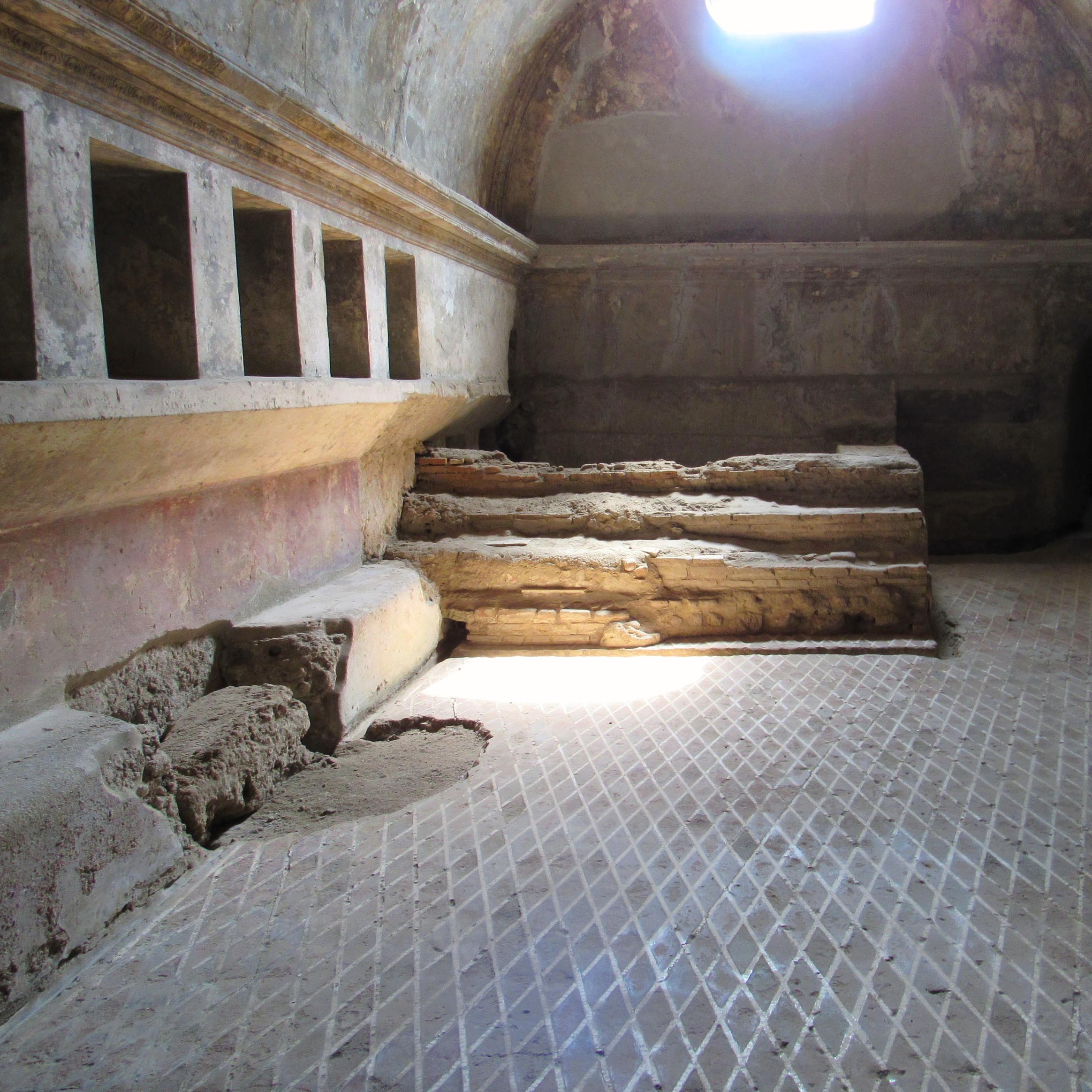10 Things You Probably Didn’t Know About Pompeii
In the ruins of a city destroyed by a pyroclastic disaster, where thousands of people died in 79 A.D., one can feel a little detached. Populated by millions of tourists every year, it can be hard to imagine how normal people may have lived here. The clopping of horses as carriages moved past. The sounds of ancient languages at storefronts, restaurants, residential homes. Without these elements, Pompeii feels like a ghost town.
Luckily, archaeologists have been digging through the ruins to recreate ancient life in this unparalleled treasure trove. Here are ten things you probably didn’t know about Pompeii.
- Pompeii was a seaside town. The eruption of Mount Vesuvius did more than bury the city in a tomb of ash and pumice: it also changed the landscape. Evidence of fish in Pompeiian diets, to interpretations of the sea in frescoes, makes it clear that Pompeii used to be on the coast. The pyroclastic blast in 79 A.D. caused the top of Mt. Vesuvius to collapse, transforming today’s version of Pompeii into the landlocked city.
- Pompeii was multicultural. Among the ruins, dozens of relics from other countries have emerged. Jade from Egypt and sculptures from India were found. Evidence like suggest that people likely knew of places outside their hometowns.
- Both the rich and the poor ate a balanced diet. Evidence of chicken, eggs, fish, and produce were in both the rich and poor circles. While there was a difference between the ordinary and the rich, both shared the same amount of nutrition.
- Bread often had stones in it. Because milling grain involved grinding flour down with stone tools. Oftentimes, pieces of the stone would be baked in the bread, a staple of ancient Pompeii. This would wear down on the teeth over time, causing cavities and other problems. Talk about taking crunchy to a new level.
- Fast food was alive and well. While it may not be the McDonald’s or Taco Bell, there was fast food in ancient Pompeii. At one point, there were twenty shops in one street. This was where people who needed to work long hours got something quick.
- The first case of congenital syphilis may have been here. In a cellar two miles away from Pompeii, the remains of twins were found. After examining their bones, researchers believe it they may have had syphilis. This would raise further questions about healthcare in Roman times, as the twins grew up to be 12-13 years old before Mt. Vesuvius erupted.
- Phallic symbols are rampant here. Yes, that’s definitely what it is on the wall. While it’s unknown what this meant in ancient times, some theorize it was a symbol of masculinity, fertility, and good luck.
- Evidence of how Pompeii lived can still be found in Naples. Some things have never changed. Many of the ways people in ancient Pompeii lived are still evident on the street level in Naples. Door knockers, graffiti, even the way stores were set up, all have frescoes that look similar to them from Pompeii.
- The baths were super dirty. There was no filtration of water in the famous Roman baths like there are in pools today. Because of this, people’s sweat, oils, and dirt would stand in the water while people relaxed in it. In fact, one Roman physician stated you shouldn’t go to the baths with open wounds, lest it gets infected and leads to other, nastier problems. Yikes.
- Small comic-book stories have been found in restaurants. In a bar, two men are drinking and start arguing over something petty. When it breaks out into a fight, the owner of the establishment steps in and threatens to kick them out for causing a scene. The words were written in the ancient world’s version of speech bubbles, reminding us that not only were these places people ate, drank, and became merry – they were also businesses.
Pompeii was a vibrant ancient city frozen in time under thirty feet of ash by Mount Vesuvius. It is the most famous archaeological site in the world, providing an opportunity to step back into an ancient world. At Sant’Anna, you can take a class where Pompeii and Herculaneum become your classroom. To find out more, visit our website. Applications for Spring 2020 are currently being accepted.
Sources:
Pompeii: Life and Death in a Roman Town. Directed and written by Paul Elston, presented by Mary Beard. BBC, 2010.









